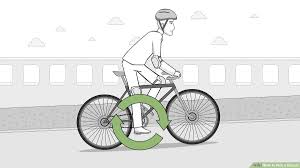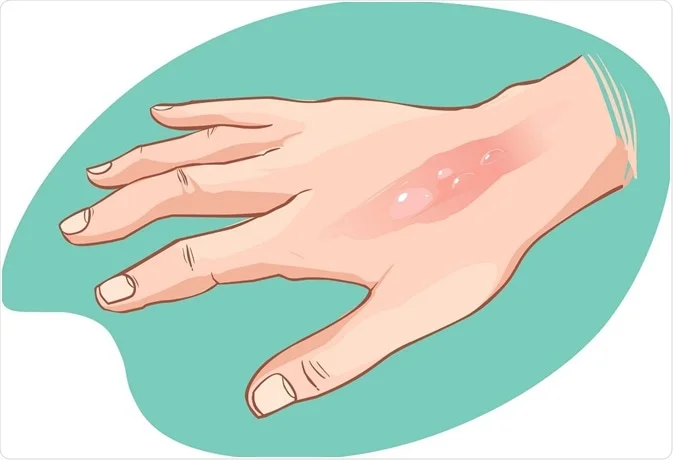Contents
ozeku.com – Riding a bicycle is a skill that offers not only a great way to exercise but also a practical mode of transportation. Whether you’re learning for the first time or want to improve your technique, mastering how to ride a bike can be fun and empowering. In this article, we’ll go through the basics and essential tips on how to ride a bicycle, from choosing the right bike to advanced riding techniques.
Read More: Limbo: Sebuah Pengalaman Game yang Gelap dan Misterius
1. Choosing the Right Bicycle
Before you start learning how to ride, it’s crucial to have a bike that fits you well. A bike that is too large or too small can make learning more difficult and uncomfortable.
Tips for choosing the right bike:
- Size matters: Stand over the bike’s frame while keeping both feet flat on the ground. There should be about 1-2 inches of space between you and the top tube.
- Adjust the seat height: The seat should be adjusted so that your legs are slightly bent when the pedal is at the lowest point. This allows you to pedal comfortably and efficiently.
- Handlebar height: Ensure the handlebars are at a comfortable height. Beginners often find it easier if the handlebars are higher so that they don’t have to bend forward too much.
Read More: Oppo A57: Smartphone Terjangkau dengan Fitur Menarik
2. Safety First
Before getting on the bike, it’s essential to consider your safety. Being properly equipped will give you confidence and protect you in case of accidents.
Essential safety gear:
- Helmet: Always wear a helmet to protect your head in case of a fall. Ensure the helmet fits snugly but comfortably.
- Knee and elbow pads: These provide additional protection for beginners.
- Proper footwear: Wear shoes with flat, sturdy soles. Avoid wearing sandals or shoes with heels.
- Reflectors or lights: If you’re riding in low light or at night, make sure your bike has reflectors or lights for visibility.
Read More: Asus ROG Gaming: Terdepan dalam Dunia Perangkat Keras untuk Gaming
3. Getting Comfortable with the Bike
Before you start pedaling, it’s a good idea to familiarize yourself with how the bike feels and how it responds to your movements. Find a flat, open space, like a park or an empty parking lot, where you can practice.
Practice balancing:
- Walk with the bike: Push the bike while walking beside it to get a feel for how it moves.
- Scoot with your feet: Sit on the bike with your feet flat on the ground and start scooting yourself forward using your feet. This will help you get used to balancing the bike without the need to pedal immediately.
- Practice braking: While scooting, gently pull on the brake levers to understand how much pressure is needed to stop smoothly.
Read More: Naturalisasi Mees Hilgers: Proses, Dampak, dan Perspektif
4. Pedaling and Steering
Once you feel comfortable balancing the bike, it’s time to start pedaling.
Steps for pedaling:
- Position one foot on a pedal: Start by putting your dominant foot on one of the pedals and keep the other foot on the ground for balance.
- Push off and pedal: Use the foot on the ground to push off and give yourself some momentum. As you start moving, put your other foot on the opposite pedal and begin pedaling.
- Keep your eyes forward: It’s essential to look ahead, not down at your feet, to maintain balance and steer effectively.
- Steer gently: Use your handlebars to steer, but don’t grip them too tightly. Keep your arms relaxed and make gentle adjustments to the direction.
5. Stopping Safely
Learning how to stop safely is just as important as learning how to start. When you need to slow down or come to a stop, use your brakes properly.
Tips for braking:
- Use both brakes: Most bikes have two brake levers, one for the front wheel and one for the back. Use both brakes simultaneously for a smoother stop.
- Brake gently: Avoid slamming on the brakes, as this can cause you to lose control and fall. Squeeze the brake levers gently and evenly.
- Put your feet down: Once you’ve slowed down, place your feet back on the ground to stop completely and stabilize yourself.
6. Turning and Shifting Gears
After you’ve mastered the basics of balancing, pedaling, and stopping, you can begin to focus on more advanced skills like turning and shifting gears.
Turning:
- Lean slightly into the turn: When making a turn, gently lean your body in the direction you want to go. The key is to remain relaxed and let the bike follow your lean.
- Slow down before turning: Reduce your speed slightly before making a turn to maintain better control of the bike.
Shifting gears:
- Understand your gears: If your bike has gears, learn how to shift them to make pedaling easier on different terrains. Lower gears are for climbing hills, while higher gears are for flat surfaces or descending.
- Shift gears gradually: Don’t shift too quickly or under heavy pressure. Slow down your pedaling slightly when shifting to make the transition smoother.
7. Navigating Different Terrains
As you gain confidence, you may encounter various terrains, from paved roads to gravel paths. Each surface requires a slightly different technique.
Riding on different terrains:
- Paved roads: These are the easiest surfaces for beginners. Keep your speed moderate, and always be aware of your surroundings, especially cars and pedestrians.
- Gravel or dirt paths: These surfaces can be trickier as they offer less traction. Ride slowly and avoid making sharp turns.
- Hills: When going uphill, shift to a lower gear and pedal steadily. When going downhill, maintain control by using your brakes to keep your speed in check.
8. Practice and Patience

Learning to ride a bike takes time and patience. Don’t get discouraged if you don’t get it right away. Each person learns at their own pace, and with regular practice, you will improve.
Tips for practice:
- Set small goals: Break down the process into small steps. For example, first focus on balancing, then pedaling, and then turning.
- Take breaks: Don’t push yourself too hard. If you feel frustrated, take a short break and come back to it with a clear mind.
- Stay relaxed: Tension in your body can make it harder to balance and steer. Remember to stay calm and relaxed while riding.
9. Riding in Traffic
Once you’re confident riding on quiet streets or bike paths, you might want to venture into areas with more traffic. Riding in traffic requires extra caution and awareness.
Safety tips for riding in traffic:
- Follow traffic rules: Always ride in the same direction as traffic and obey all traffic signals and signs.
- Stay in the bike lane: If there’s a designated bike lane, stay in it to avoid getting too close to cars.
- Use hand signals: Learn basic hand signals to communicate with drivers when you’re turning or stopping.
- Be aware of your surroundings: Always keep an eye out for pedestrians, other cyclists, and cars. Don’t assume drivers see you, and stay alert at all times.
10. Enjoy the Ride
Once you’ve mastered the basics, riding a bike can be an incredibly enjoyable and freeing experience. It’s a great way to explore new areas, get some exercise, and reduce your carbon footprint.
Final tips for enjoying the ride:
- Vary your routes: Don’t stick to the same paths. Explore different neighborhoods or parks to keep things exciting.
- Ride with friends: Cycling with friends or family can make the experience more fun and social.
- Track your progress: If you’re riding for fitness, use apps or fitness trackers to monitor your distance and improvement over time.
Conclusion
Learning how to ride a bike is a valuable and rewarding skill. By following the steps outlined in this guide, you’ll be well on your way to becoming a confident and capable cyclist. Remember to prioritize safety, practice regularly, and most importantly, enjoy the journey!




